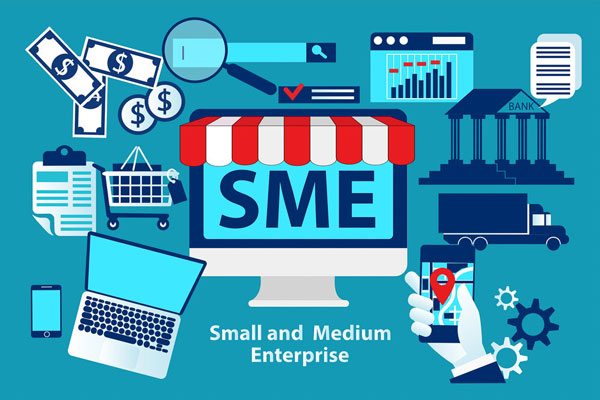COVID – The Perfect Disrupter for Small and Medium Enterprises to Leverage for Growth
December 17, 2020Art Koch’s Profit Chain® Series
Volume 3 | Number 12 | December 2020

With any significant event, crisis, or seismic economic shift, there will always be the opportunity for agile enterprises to fill the void the disruption creates.
The COVID pandemic drastically hastened the retreat from globalization, and depending on the survey, 67% to 84% of North American executives say they are increasing reshoring initiatives. The withdrawal from globalization creates opportunities for enterprises that can work quickly and have a depth of expertise to seize the moment.
At the current time, there is an unprecedented opportunity for SMEs to position themselves as experts in their field and to partner with customers. It is a defining moment when you can reposition your enterprise in the minds of customers and their executive team. Highlight your strengths that will make your customer better. SME’s typically have all the necessary ingredients to capture moments like these because of:
- Low overhead structure.
- Depth and breadth of the leadership team.
- Deep technological knowledge.
- Intellectual property and trade secrets.
- Rapid problem resolution.
- Swift ramping up of production and transition to different products.
- Quick decision making.
- Rapid staffing and training of the workforce.
- Less corporate bureaucracy.

To better position their strengths, it’s vital for SME’s to understand supply chain options for their customer partners.
- Resourcing: domestic sourced suppliers or sourcing with suppliers in lower geopolitical risk countries.
- Insourcing: Repositioning production within a company’s current facilities.
- Nearshoring: Relocating manufacturing or supply chain functions to countries nearer to the final customer. For the US, those countries are Mexico, Canada, and the Caribbean.
- Reshoring: Relocating the complete supply chain and operations closer to customers.
SME’s must recognize that they have many advantages over the remote suppliers of today’s extended supply chain options. The pandemic has created an extraordinary period in time that SME’s can capitalize on to help their customers.
Shorter-term opportunities to immediately help the customer out of critical situations and with triage include:
- Assistance with surge capacity to elevate supply chain risk.
- Greater responsiveness to change.
- Greater flexibility with shorter lead-times.
- Greater ability to support quality issues with local manufacturing and engineering support.
- Acting as a source for technical needs, both virtual and “boots on the ground” support.

SME’s have longer-term opportunities to assist customers with their supply chain strategy, risk mitigation, and advantages over international competition due to:
- Tariff avoidance.
- Less currency hedging.
- No loss of IP.
- No slave or forced labor.
- Fewer international labor strikes to contend with.
- Shorter lead-time helps to increase responsiveness and flexibility and decreases total pipeline inventories.
- The improved total cost of ownership.
- With partnerships, supply chains become more resilient.
There are several barriers that SMEs are better equipped to manage since they are more agile than larger corporations:
- They are in a better position to fill the gaps due to skilled labor shortages.
- Larger corporations typically don’t have a deep reach back into supply chains. SMEs have better networks with other SMEs to help the new partners fill critical raw material, technical and capacity shortages.
- Higher than usual absenteeism is hurting many manufacturing and supply chain functions. Absenteeism is predominantly driven by closing schools, daycare, and eldercare, leaving the associate with no other option but to miss work to care for their loved ones. With less bureaucracy, SMEs potentially can resolve many of these issues with internal care options programs.
- SME’s technical expertise will help to navigate environmental issues with internal resourcefulness or trade secrets.
- Travel restrictions have made it challenging to visit global suppliers to resolve quality issues, new piece inspection, or cost improvement initiatives. Local and regional supplier partners can be easily reached, which creates a perfect opportunity to stress Supplier Quality Engineering expertise and SME’s strengths.
Overall, SMEs must articulate how they help the value proposition of total cost of ownership improvements. Remember, the corporate board of directors has two directives that supply chain management can directly impact; the mitigation of risk and the corporate valuation improvement—what better way to achieve these directives than by using the supply chain as a competitive advantage?
Categorized in: Art Koch Profit Chain® Tips
